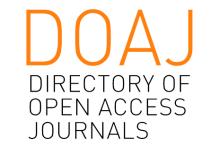Resource information
In the practice of regulation of land relations certain requirements to formation of land use restrictions and encumbrances of land rights are formed. Their systematization process will improve the regulation of the legal regime of land use as legal provisions form the essence of the land use restrictions and encumbrances of land rights and should be considered in their formation.
As land use regime with restrictions in land use and other natural resources is interconnected, it is proposed restrictions to use spatial organization as a basic classification criteria. Spatial organization is formed by environmental management structure upon which different functional types and forms of land use, with the general trends in the exploitation of natural resources, land use and protection are integrated.
The article states that the restriction of land use are divided into physical and administrative. Physical limitations – a bottleneck that do not enhance the efficiency of land- and environmental management system. However, the administrative limitations are stereotypes and beliefs that cannot be questioned, combining 80 to 95% of all restrictions. It is noted that there are several types of limitations, which include: restrictions of the available potential, restrictions due to public interest, execution time limit and market limitations (balance between supply and demand).
Under the subtype of land use is meant the basic direction of use of land and other natural resources. Type of land use – a set of land use subtypes that have a similar intensity of use of land and other natural resources, improving the environment. It is therefore proposed to allocate two groups of natural resource use: a) resource-consuming (which modifies or destroys) and b) resource-saving (which saves) [2].
The first group includes the following land use types: background type, multicentral and central, and the second – disperse (saving). At the regional and territorial land use levels most clearly presented the background type of environmental management, which is interconnected with the zonal features of the landscape. For the background type of environmental management can be considered a priority of biological, land, water, and other resources. The background land use type is divided into subtypes: agricultural, forestry, traditional, resource, industrial and residential (rural).
To ensure systematic consideration of land interests of the state, local communities, citizens and businesses we selected three hierarchical levels of territorial organization of land use, which are characterized by their methodological approaches to the process of forming restrictions in land use. To go from the general (territory) to the specific (land) formation of land use regime institutional scheme of methodological process of restrictions forming in land use is proposed.



